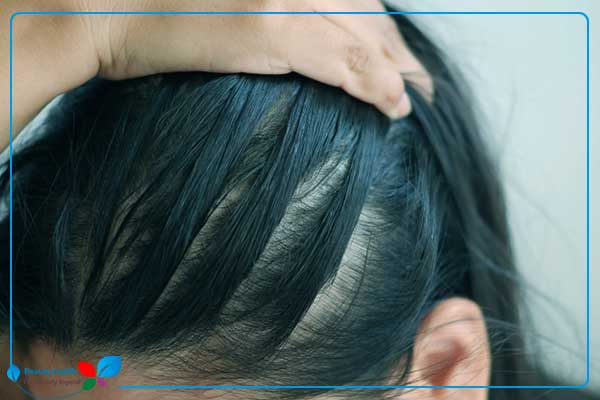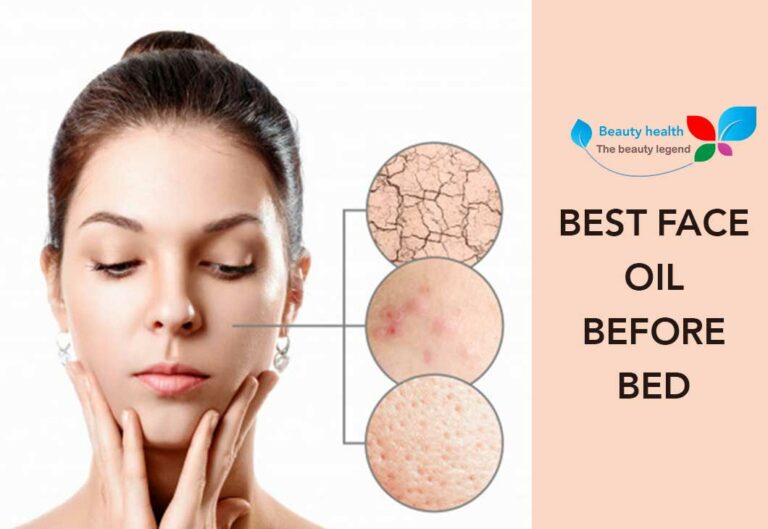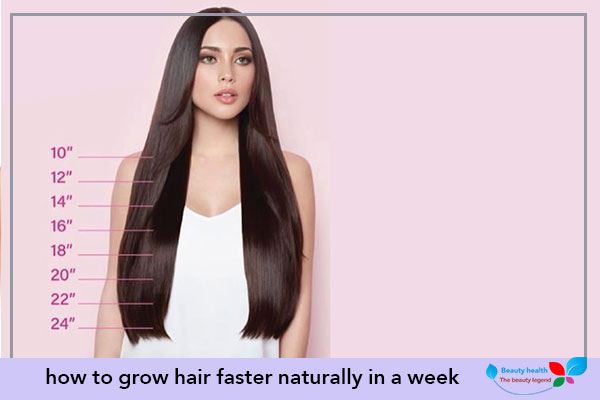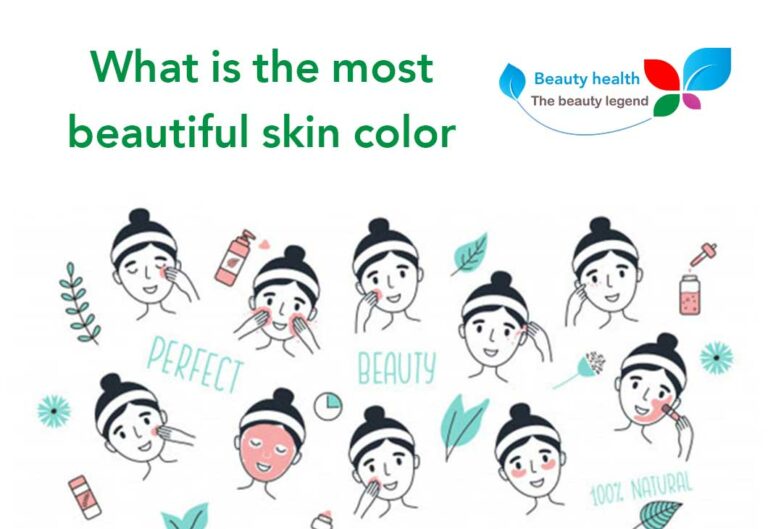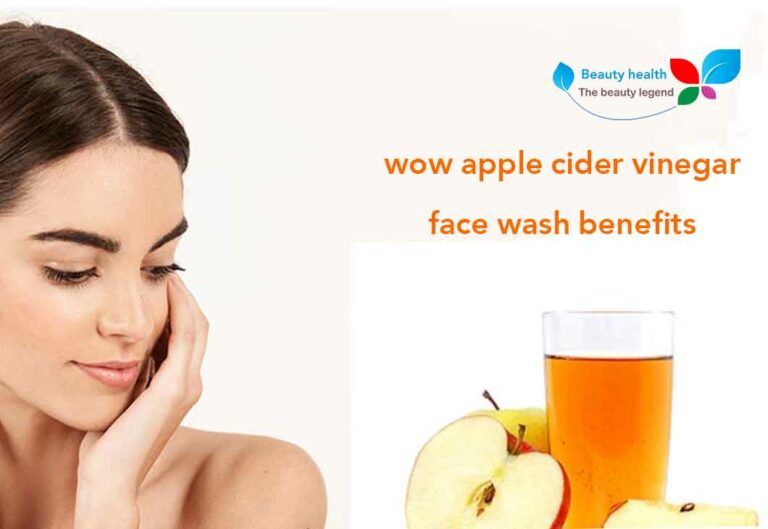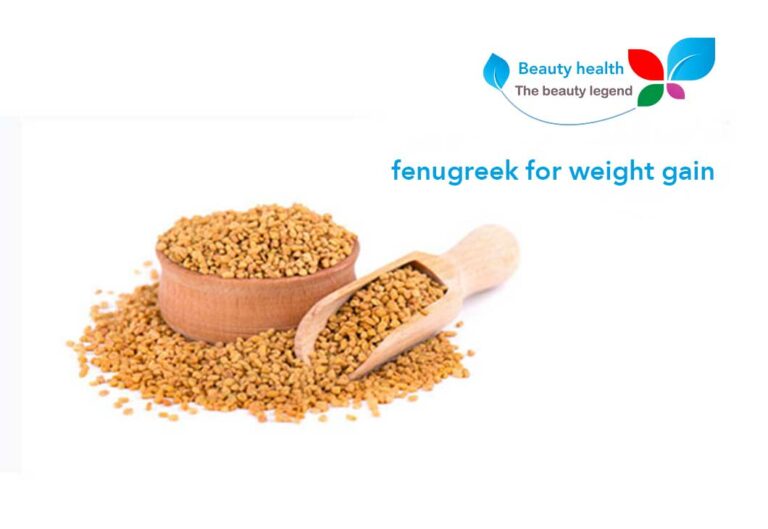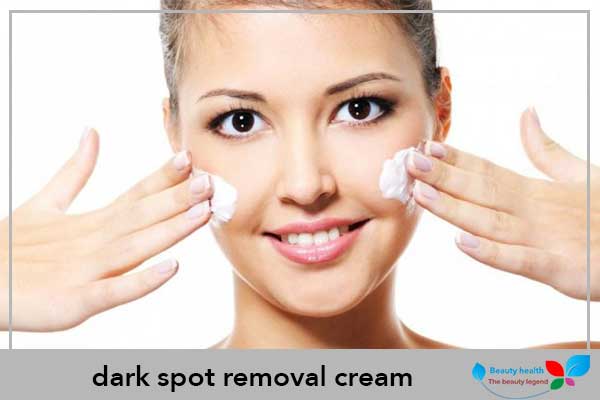how to stop hair loss and regrow hair naturally
Hair loss is a widespread concern that transcends age, gender, and cultural boundaries. Many individuals grapple with the emotional and physical impact of losing their hair, leading to a quest for effective solutions.
In this introduction about how to stop hair loss and regrow hair naturally, we’ll explore why hair loss is such a common concern and emphasize the pivotal role that natural solutions play in addressing this universal issue.
1.1 Why Hair Loss is a Common Concern
The sight of hair falling out can be distressing, often causing individuals to question their overall health and well-being. Whether it’s thinning, receding, or balding, the fear of losing one’s hair is deeply rooted in societal perceptions of beauty and vitality. Factors such as genetics, hormonal changes, and lifestyle contribute to the prevalence of hair loss, making it a shared experience for many.
Moreover, the media’s portrayal of thick, luscious hair as a symbol of youth and attractiveness further amplifies the concern surrounding hair loss. As a result, individuals of all ages and backgrounds find themselves seeking solutions to retain or regrow their hair.
1.2 Importance of Natural Solutions
In the pursuit of combating hair loss, the significance of natural solutions cannot be overstated. While the market is flooded with chemical-laden products promising quick fixes, the drawbacks of such approaches are becoming increasingly apparent. Natural solutions, on the other hand, offer a holistic and sustainable approach to hair care.
Choosing natural remedies means embracing the inherent power of nature to nourish and rejuvenate the scalp and hair follicles. From essential oils to herbal treatments, these solutions work with the body’s natural processes, avoiding the potential side effects associated with synthetic alternatives. Beyond the physical benefits, natural solutions also align with a growing societal consciousness towards eco-friendly and sustainable practices.
In the subsequent sections of this article, we will delve deeper into the various aspects of hair loss, exploring the types and causes, and subsequently, the role that diet, lifestyle changes, and specific remedies play in addressing this common concern. Join us on this journey to unlock the secrets of how to stop hair loss and regrow hair naturally.
how to grow your hair 19 inches overnight
Understanding Hair Loss
Hair loss is a complex and multifaceted issue, with various types and underlying causes. A deeper understanding of these aspects is crucial in formulating effective strategies to combat and reverse hair loss. In this section, we will explore the different types of hair loss and the common causes that contribute to this widespread concern.
2.1 Types of Hair Loss
Androgenetic Alopecia
Androgenetic alopecia, commonly known as male or female pattern baldness, is the most prevalent type of hair loss. It is influenced by genetic and hormonal factors, leading to the gradual thinning of hair, typically at the crown or temples.
Telogen Effluvium
This type of hair loss is characterized by a sudden and widespread shedding of hair. Telogen effluvium is often triggered by significant stress, hormonal changes, or certain medications, causing hair follicles to prematurely enter the resting phase.
Alopecia Areata
Alopecia areata is an autoimmune condition where the immune system mistakenly attacks hair follicles, leading to hair loss in patches. In severe cases, it can progress to complete baldness, although regrowth is possible.
Traction Alopecia
Traction alopecia results from constant pulling or tension on the hair, often due to tight hairstyles like braids or ponytails. This chronic stress on the hair follicles can cause gradual hair loss, especially along the hairline.
2.2 Common Causes
Hormonal Changes
Fluctuations in hormones, such as during puberty, pregnancy, or menopause, can influence hair growth cycles. An imbalance in hormones, particularly androgens like dihydrotestosterone (DHT), is a common trigger for hair loss.
Nutritional Deficiencies
Inadequate intake of essential nutrients, including vitamins A, C, E, and minerals like iron and zinc, can impact the health of hair. A balanced diet is crucial for nourishing the hair follicles and promoting regrowth.
Stress and Emotional Factors
Chronic stress and emotional turmoil can contribute to hair loss. The release of stress hormones can disrupt the natural growth cycle of hair, leading to increased shedding.
Medical Conditions
Certain medical conditions, such as thyroid disorders, autoimmune diseases, and fungal infections of the scalp, can contribute to hair loss. Treating the underlying medical issue is often key to addressing hair loss in these cases.
Hereditary Factors
Genetics play a significant role in determining an individual’s susceptibility to hair loss. If there is a family history of baldness or thinning hair, there is an increased likelihood of experiencing similar issues.
Understanding the types and causes of hair loss lays the groundwork for developing targeted and effective solutions. In the subsequent sections, we will delve into the role of diet and lifestyle changes, explore natural remedies, and provide insights into professional treatments for those seeking a comprehensive approach to stopping hair loss and promoting natural regrowth.
The Role of Diet and Nutrition
Diet and nutrition play a pivotal role in maintaining overall health, and their impact extends to the health of our hair. In this section, we will delve into the significance of a balanced diet and explore the specific nutrients that contribute to optimal hair health.
3.1 Importance of a Balanced Diet
A balanced diet is the cornerstone of promoting hair health from within. The nutrients derived from the foods we consume provide the building blocks for strong, vibrant hair. Here’s why maintaining a balanced diet is crucial for preventing hair loss and encouraging regrowth:
Supporting Hair Follicles
Hair follicles are the tiny structures in the skin from which hair grows. A balanced diet ensures that these follicles receive a steady supply of essential nutrients, promoting healthy growth and preventing premature shedding.
Providing Energy for Hair Growth
Hair cells are some of the fastest-growing cells in the body, and they require a constant source of energy. A balanced diet, rich in carbohydrates and proteins, ensures that the energy needs for hair growth are met.
Maintaining Scalp Health
A healthy scalp is fundamental to healthy hair. Nutrient-rich foods contribute to scalp health, preventing dryness, flakiness, and conditions that may hinder hair growth.
Balancing Hormones
Certain nutrients play a role in hormonal balance, particularly those related to androgens like DHT. Hormonal imbalances are a common cause of hair loss, and a balanced diet can help regulate these factors.
3.2 Nutrients for Hair Health
Vitamins
Vitamin A
Critical for the production of sebum, an oily substance that moisturizes the scalp. Sources include sweet potatoes, carrots, and spinach.
Vitamin C
An antioxidant that aids in the production of collagen, vital for hair structure. Citrus fruits, strawberries, and bell peppers are excellent sources.
Vitamin E
Promotes blood circulation, ensuring the scalp receives adequate oxygen and nutrients. Nuts, seeds, and leafy greens are rich in vitamin E.
Minerals
Iron
Essential for carrying oxygen to hair follicles. Iron-rich foods like lean meats, beans, and fortified cereals support healthy hair growth.
Zinc
Supports the hair growth and repair cycle. Include sources like oysters, nuts, and seeds in your diet.
Biotin
A B-vitamin crucial for hair health, found in eggs, nuts, and whole grains.
Proteins
Proteins are the building blocks of hair. Incorporate lean meats, fish, beans, and dairy products to ensure an adequate protein intake.
Omega-3 Fatty Acids
Found in fatty fish, flaxseeds, and walnuts, omega-3 fatty acids contribute to scalp health and can help prevent hair loss.
Water
Hydration is key for overall health, including hair health. Drink an ample amount of water to keep your scalp and hair moisturized.
Incorporating a variety of nutrient-rich foods into your diet ensures that you provide your hair with the essential elements it needs to thrive. In the following sections, we will explore lifestyle changes and natural remedies that complement a balanced diet in the journey to stop hair loss and promote natural hair regrowth.
Lifestyle Changes for Healthy Hair
Beyond diet and nutrition, certain lifestyle changes can significantly impact the health of your hair. In this section, we’ll explore the importance of managing stress levels and incorporating regular exercise into your routine for healthier, more resilient hair.
4.1 Managing Stress Levels
Stress is a silent adversary that can wreak havoc on your overall health, including the health of your hair. Chronic stress triggers hormonal imbalances and inflammation, both of which contribute to hair loss. Here’s how managing stress levels can positively influence your hair health:
Impact on Hormones
Stress activates the body’s “fight or flight” response, releasing stress hormones like cortisol. Elevated cortisol levels can disrupt the natural hair growth cycle, leading to increased shedding and thinning.
Blood Circulation to the Scalp
Stress can constrict blood vessels, reducing blood flow to the scalp. This diminished blood circulation deprives hair follicles of the nutrients and oxygen they need for optimal function.
Inflammation and Hair Follicles
Chronic stress contributes to inflammation, which can negatively affect hair follicles. Inflammation disrupts the normal functioning of follicles, leading to conditions that contribute to hair loss.
Strategies for Stress Management:
- Mindfulness and Meditation: Practices like meditation and mindfulness can help calm the mind and reduce stress levels.
- Physical Activity: Engaging in physical activities, such as yoga or tai chi, can be effective in reducing stress.
- Hobbies and Relaxation Techniques: Pursuing hobbies and relaxation techniques, whether it’s reading, gardening, or listening to music, can provide a mental escape from stressors.
4.2 Regular Exercise and Its Impact
Exercise is not only beneficial for your overall well-being but also plays a crucial role in maintaining healthy hair. The positive effects of regular physical activity extend to the scalp and hair follicles:
Improved Blood Circulation
Exercise increases blood flow throughout the body, including the scalp. This enhanced circulation ensures that hair follicles receive a richer supply of nutrients and oxygen, promoting healthier growth.
Balanced Hormones
Regular physical activity helps regulate hormones, including those linked to hair health. This hormonal balance can mitigate the impact of conditions like androgenetic alopecia.
Stress Reduction
Exercise is a potent stress-reliever. Physical activity prompts the release of endorphins, reducing stress and lowering cortisol levels, thereby promoting a healthier hair growth environment.
Incorporating Exercise into Your Routine:
- Aerobic Exercise: Activities like jogging, swimming, or cycling are excellent for overall cardiovascular health, benefiting your hair.
- Strength Training: Building muscle through activities like weightlifting can contribute to hormonal balance.
- Yoga or Pilates: These activities not only provide physical benefits but also incorporate stress-reducing elements.
By adopting strategies to manage stress and incorporating regular exercise into your lifestyle, you create a conducive environment for healthy hair growth. In the subsequent sections, we will explore natural remedies, DIY hair treatments, and the importance of proper scalp care in your journey to stop hair loss and promote natural regrowth.
Natural Remedies for Hair Regrowth
In the quest for regrowing hair naturally, turning to the bounties of nature can be a game-changer. In this section, we’ll explore two powerful natural remedies: Aloe vera and essential oils. These ingredients offer not only potential hair regrowth benefits but also contribute to overall hair health.
5.1 Aloe Vera and Its Benefits
The Magic of Aloe Vera:
Aloe vera is a succulent plant with a rich history of medicinal use. Its gel, derived from the fleshy leaves, is a treasure trove of nutrients that can benefit your hair in various ways.
Benefits for Hair:
- Scalp Soothing Properties: Aloe vera has natural cooling properties that can soothe an irritated scalp. It is particularly beneficial for those with conditions like dandruff or an itchy scalp.
- Balancing Scalp pH: Aloe vera helps maintain the scalp’s natural pH balance. An optimally balanced pH is crucial for a healthy scalp environment, fostering hair growth.
- Moisturizing the Hair: The gel from aloe vera leaves is an excellent natural moisturizer. Applying it to your hair can hydrate and nourish, reducing dryness and preventing breakage.
- Stimulating Hair Growth: Aloe vera contains enzymes that can promote hair growth by removing dead skin cells from the scalp and unclogging hair follicles.
How to Use Aloe Vera for Hair:
- Aloe Vera Gel Mask: Apply fresh aloe vera gel directly to your scalp and hair. Leave it on for 30 minutes before rinsing with a mild shampoo.
- Aloe Vera and Coconut Oil Treatment: Mix aloe vera gel with coconut oil for a nourishing hair mask. Leave it on for an hour before washing it out.
5.2 Essential Oils for Hair Regrowth
Harnessing the Power of Essential Oils:
Essential oils are concentrated extracts from plants, and many of them possess properties that can stimulate hair growth, improve scalp health, and add luster to your locks.
Benefits for Hair:
- Improved Blood Circulation: Certain essential oils, such as rosemary and peppermint, have vasodilatory effects, enhancing blood flow to the scalp and promoting hair growth.
- Anti-Inflammatory Properties: Oils like lavender and tea tree oil have anti-inflammatory properties, which can soothe the scalp and reduce inflammation that may contribute to hair loss.
- Strengthening Hair Follicles: Essential oils like cedarwood and thyme have been associated with strengthening hair follicles, reducing breakage and promoting healthier, thicker hair.
- Balancing Sebum Production: Some essential oils, including lemon and chamomile, can help balance sebum production on the scalp, preventing excess oiliness or dryness.
How to Use Essential Oils for Hair:
- Scalp Massage: Dilute a few drops of essential oil with a carrier oil like jojoba or coconut oil. Massage the mixture into your scalp and leave it on for at least 30 minutes before washing.
- Add to Shampoo or Conditioner: Add a few drops of essential oil to your regular shampoo or conditioner for an extra boost.
- DIY Hair Oil Blend: Create a personalized hair oil blend by mixing different essential oils with a carrier oil. Apply it to your scalp and hair, leaving it on for an hour or overnight.
Incorporating these natural remedies into your hair care routine can provide a nourishing and revitalizing boost. In the following sections, we will explore DIY hair masks, the importance of proper scalp care, and ways to avoid common mistakes that may contribute to hair loss.
DIY Hair Masks and Treatments
Taking a hands-on approach to hair care can be both rewarding and effective. In this section, we’ll explore two DIY hair treatments – an egg mask for strengthening hair and a green tea rinse for promoting growth. These natural concoctions harness the power of common household ingredients for healthier, more resilient hair.
6.1 Egg Mask for Strengthening Hair
Eggs: Nature’s Protein Boost
Eggs are a rich source of proteins, vitamins, and minerals that are essential for strong and healthy hair. Creating an egg mask provides a nourishing treatment that can strengthen hair strands and add shine.
How to Make and Apply an Egg Mask:
- Ingredients:
- 1 or 2 eggs (depending on hair length)
- 1 tablespoon of olive oil or coconut oil
- 1 tablespoon of honey
- Instructions:
- Crack the eggs into a bowl and beat them well.
- Add the olive oil or coconut oil and honey to the beaten eggs. Mix thoroughly to create a smooth paste.
- Apply the mask to your hair, focusing on the roots and tips.
- Cover your hair with a shower cap and leave the mask on for 30 to 60 minutes.
- Rinse the mask out with cool or lukewarm water. Avoid using hot water to prevent the eggs from cooking in your hair.
- Benefits:
- Protein Boost: Eggs are rich in proteins, promoting stronger and more resilient hair.
- Nutrient Infusion: Olive oil and honey add moisture and nutrients, leaving your hair nourished and shiny.
6.2 Green Tea Rinse for Promoting Growth
Green Tea: An Antioxidant Elixir
Green tea is renowned for its antioxidant properties, and when applied topically, it can benefit the scalp and hair. A green tea rinse can stimulate hair follicles, improve overall scalp health, and contribute to hair growth.
How to Make and Apply a Green Tea Rinse:
- Ingredients:
- 2 green tea bags or 2 tablespoons of loose green tea leaves
- 2 cups of hot water
- Instructions:
- Steep the green tea bags or leaves in hot water for about 5 to 10 minutes, allowing it to cool.
- Once the green tea is at room temperature, pour it over your hair after shampooing.
- Gently massage the tea into your scalp, ensuring even coverage.
- Leave the green tea rinse on for 5 to 10 minutes.
- Rinse your hair thoroughly with cool water.
- Benefits:
- Antioxidant Action: Green tea is rich in antioxidants that can protect hair follicles from damage.
- Improved Scalp Health: The rinse can soothe the scalp and improve its overall health, creating a conducive environment for hair growth.
Incorporating these DIY treatments into your regular hair care routine provides a natural and cost-effective way to enhance the strength and growth of your hair. In the next sections, we’ll explore the impact of proper scalp care and discuss common mistakes to avoid on your journey to naturally stopping hair loss and regrowing your hair.
The Impact of Scalp Care
Caring for your scalp is a fundamental aspect of maintaining healthy hair. In this section, we’ll delve into the significance of proper cleansing and explore massaging techniques that can enhance blood circulation to the scalp, fostering an environment conducive to hair growth.
7.1 Proper Cleansing and Its Significance
The Foundation of Healthy Hair: A Clean Scalp
A clean scalp is the canvas upon which healthy hair grows. Proper cleansing not only removes dirt, oil, and product buildup but also creates an environment that supports the natural functions of the scalp.
Steps for Proper Scalp Cleansing:
- Choose the Right Shampoo: Use a mild, sulfate-free shampoo that suits your hair type. Harsh shampoos can strip the scalp of its natural oils, leading to dryness.
- Regular Washing: Wash your hair regularly, depending on your hair type and lifestyle. Oily scalps may require more frequent washing, while those with dry scalps may benefit from less frequent washing.
- Massage During Washing: Gently massage the shampoo into your scalp using circular motions. This not only cleanses but also stimulates blood flow.
- Thorough Rinsing: Ensure thorough rinsing to remove all traces of shampoo. Residue can lead to irritation and affect the health of your hair follicles.
Benefits of Proper Scalp Cleansing:
- Oil Regulation: Regular cleansing helps maintain a balance in oil production, preventing excess oiliness or dryness.
- Prevention of Scalp Conditions: A clean scalp is less prone to conditions like dandruff and fungal infections.
- Enhanced Nutrient Absorption: A clean scalp allows for better absorption of nutrients, promoting overall hair health.
7.2 Massaging Techniques for Improved Circulation
The Power of Scalp Massage:
Scalp massage is more than just a pleasurable experience – it’s a valuable practice that can enhance blood circulation to the scalp, promoting the delivery of essential nutrients to hair follicles.
Effective Scalp Massage Techniques:
- Circular Motion Massage: Use your fingertips to massage your scalp in small circular motions. Start from the forehead and move towards the back of your head. Repeat for a few minutes.
- Kneading Motion: Lift sections of your hair and gently knead the scalp with your fingertips. This motion helps relax the scalp and improves blood flow.
- Back-and-Forth Motion: Place your fingertips on your scalp and move them back and forth, covering the entire scalp. This technique stimulates blood circulation.
- Hair Pulling: Gently pull small sections of hair for a few seconds. This technique can stimulate hair follicles and promote growth.
Benefits of Scalp Massage:
- Increased Blood Flow: Improved circulation ensures that hair follicles receive an ample supply of oxygen and nutrients.
- Stress Reduction: Scalp massage can alleviate tension and stress, contributing to a healthier scalp environment.
- Relaxation: Beyond its physiological benefits, scalp massage is a relaxing practice that can enhance your overall well-being.
Incorporating proper cleansing techniques and regular scalp massage into your hair care routine can make a significant difference in the health and vitality of your hair. In the upcoming sections, we will explore common mistakes to avoid and delve into professional treatments for those seeking additional solutions in their journey to stop hair loss and promote natural hair regrowth.
Avoiding Common Mistakes
Maintaining healthy hair involves not just adopting positive practices but also steering clear of common mistakes that can contribute to hair loss and damage. In this section, we’ll highlight two prevalent pitfalls: the overuse of styling products and the significance of embracing gentle hair care practices.
8.1 Overuse of Styling Products
The Price of Excessive Styling:
While styling products can enhance your hair’s appearance, their overuse can lead to adverse effects on hair health. Heavy reliance on these products may result in product buildup, clogged follicles, and increased risk of breakage.
Common Styling Product Offenders:
- Hairsprays and Gels: Excessive use can lead to a buildup that weighs down the hair, making it more prone to breakage.
- Heat Styling Tools: Frequent use of straighteners, curling irons, and blow dryers without proper protection can damage the hair shaft and lead to breakage.
- Chemical Treatments: Overlapping or frequent applications of chemical treatments, like perms or relaxers, can weaken hair and contribute to thinning.
Tips to Avoid Overuse:
- Limit Frequency: Use styling products in moderation. Avoid daily use, especially for products with heavy formulations.
- Choose Quality Products: Opt for high-quality, nourishing styling products that are less likely to cause buildup.
- Protective Styling: When using heat styling tools, use a heat protectant spray and avoid high temperatures to minimize damage.
8.2 The Importance of Gentle Hair Care Practices
Handle With Care: The Gentle Approach to Hair Care:
Hair, especially when wet, is more susceptible to damage. Rough handling, tight hairstyles, and harsh drying practices can lead to breakage and contribute to overall hair loss.
Common Mistakes to Avoid:
- Vigorous Towel Drying: Rubbing hair vigorously with a towel can cause friction and lead to breakage. Instead, gently pat your hair dry.
- Tight Hairstyles: Constantly wearing tight hairstyles like ponytails or braids can cause stress on the hair shaft and contribute to traction alopecia.
- Brushing Wet Hair: Wet hair is more prone to breakage. If brushing is necessary, use a wide-toothed comb and start from the tips, working your way up.
Adopt Gentle Hair Care Habits:
- Air Dry When Possible: Allow your hair to air dry naturally, or use the lowest heat setting on your hair dryer.
- Detangle with Care: Use a wide-toothed comb or your fingers to gently detangle wet hair, starting from the tips and moving upwards.
- Loose Hairstyles: Give your hair a break from tight hairstyles, allowing it to rest and minimizing stress on the follicles.
By steering clear of these common mistakes and adopting gentle hair care practices, you contribute to the overall health and longevity of your hair. In the concluding sections, we’ll explore professional treatments and share real-life success stories, providing a comprehensive guide for those looking to stop hair loss and promote natural hair regrowth.
Professional Treatments
When natural remedies and at-home practices might not be sufficient, seeking professional guidance becomes essential. In this section, we’ll explore two professional treatments: consultation with a dermatologist and hair transplant options. These approaches provide specialized interventions for individuals looking to address hair loss effectively.
9.1 Consultation with a Dermatologist
The Expert’s Insight: Dermatological Consultation
A dermatologist specializes in skin, hair, and nail health. Consulting with a dermatologist is a crucial step for anyone experiencing persistent or severe hair loss. Here’s what you can expect during a dermatological consultation:
Diagnostic Assessment:
- Medical History: The dermatologist will inquire about your medical history, including any family history of hair loss, underlying health conditions, and medications you may be taking.
- Scalp Examination: A thorough examination of your scalp helps identify any underlying conditions, such as infections, inflammation, or signs of hereditary hair loss.
Customized Treatment Plan:
- Prescription Medications: Dermatologists may prescribe medications like minoxidil or finasteride to promote hair regrowth or slow down the progression of hair loss.
- Topical Treatments: Specialized shampoos, topical corticosteroids, or other medicated solutions may be recommended based on the specific scalp condition.
- Lifestyle Recommendations: Dermatologists often provide advice on lifestyle changes, including dietary adjustments and stress management techniques.
Follow-Up and Monitoring:
Regular follow-up appointments allow the dermatologist to monitor progress, adjust treatment plans as needed, and address any concerns or side effects.
9.2 Hair Transplant Options
Surgical Intervention: Hair Transplants
For individuals seeking a more permanent solution to hair loss, hair transplant options provide surgical interventions that involve relocating hair follicles from one part of the body to the balding or thinning area. Two common types of hair transplant procedures are:
Follicular Unit Transplantation (FUT):
- Procedure: A strip of skin with hair follicles is surgically removed from the donor area (usually the back of the head) and dissected into individual follicular units.
- Transplant: The dissected follicular units are then transplanted into the recipient area, where hair is thinning or lost.
Follicular Unit Extraction (FUE):
- Procedure: Individual hair follicles are extracted directly from the donor area using a specialized punch-like instrument.
- Transplant: The extracted follicles are then transplanted into the recipient area, mimicking the natural pattern of hair growth.
Considerations:
- Effectiveness: Hair transplants can provide natural-looking results, effectively addressing balding or thinning areas.
- Recovery: Recovery time varies, and there may be some postoperative discomfort, swelling, or temporary shedding of transplanted hair.
- Permanent Solution: Hair transplants offer a long-lasting and often permanent solution to hair loss.
Before considering a hair transplant, it’s crucial to consult with a qualified and experienced surgeon to determine eligibility and discuss expectations.
These professional treatments provide individuals with tailored approaches to address hair loss based on their specific conditions and preferences. In the concluding sections, we’ll share real-life success stories and offer a custom message for those ready to take the next steps in their journey to stop hair loss and promote natural hair regrowth.
Conclusion “how to stop hair loss and regrow hair naturally”
In this journey to how to stop hair loss and regrow hair naturally, embracing a holistic approach is key. From understanding the intricacies of different hair loss types to incorporating sustainable practices, the path to healthier hair is multifaceted. Remember, patience and consistency are your allies on this transformative journey.
FAQs “how to stop hair loss and regrow hair naturally”
Can Genetics Be Overcome in Natural Hair Regrowth?
Genetics can influence hair health, but natural remedies can still make a significant impact. While you may not change your genetic predisposition, you can improve the overall health of your hair.
How Long Does It Take to See Results with Natural Remedies?
Results vary, but consistency is crucial. Some may see improvements in a few weeks, while others may take longer. Be patient and committed to your natural hair care routine.
Are There Any Side Effects to Natural Hair Regrowth Methods?
Natural methods generally have fewer side effects than chemical alternatives. However, individual reactions may vary. Always perform a patch test and consult with a professional if uncertain.
Can Stress Alone Cause Hair Loss?
Yes, stress can contribute to hair loss. Managing stress through relaxation techniques and a healthy lifestyle can positively impact hair health.
What Role Does Hydration Play in Maintaining Healthy Hair?
Proper hydration is essential for overall health, including hair health. Drinking an adequate amount of water helps keep your hair and scalp moisturized.
